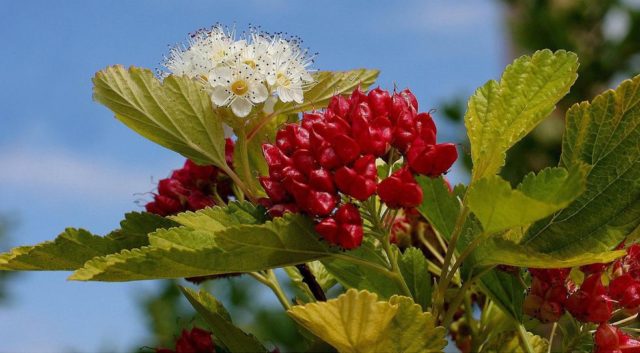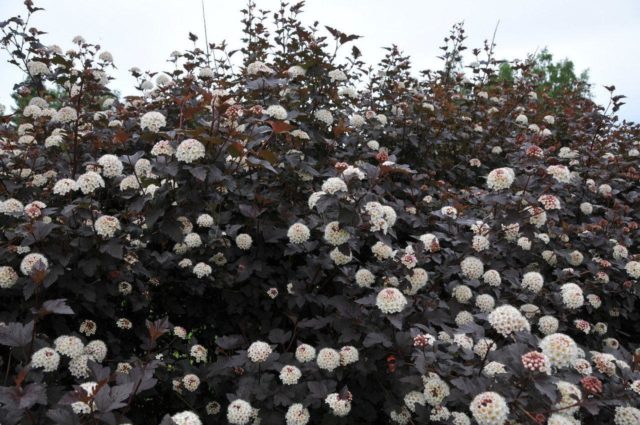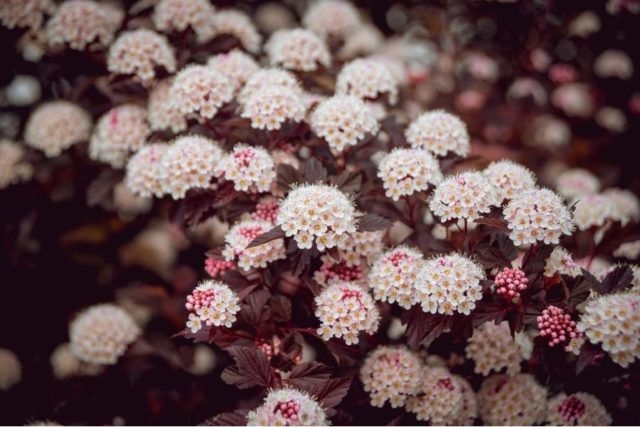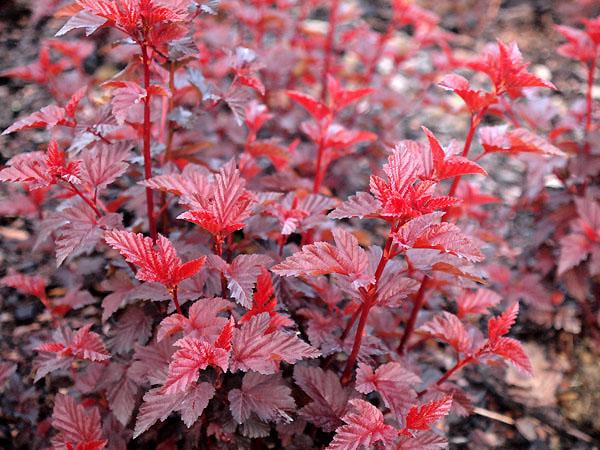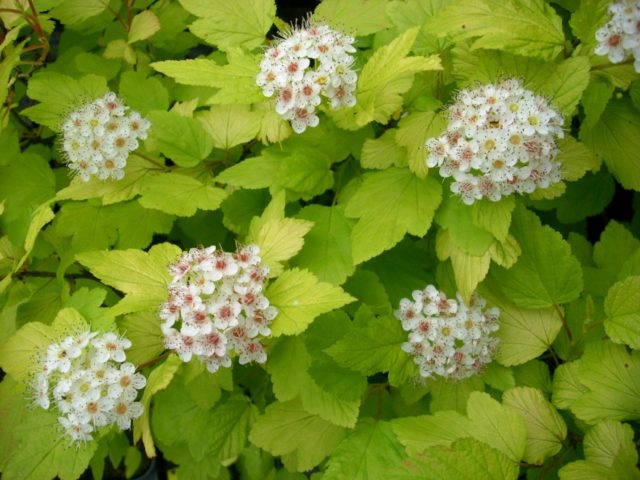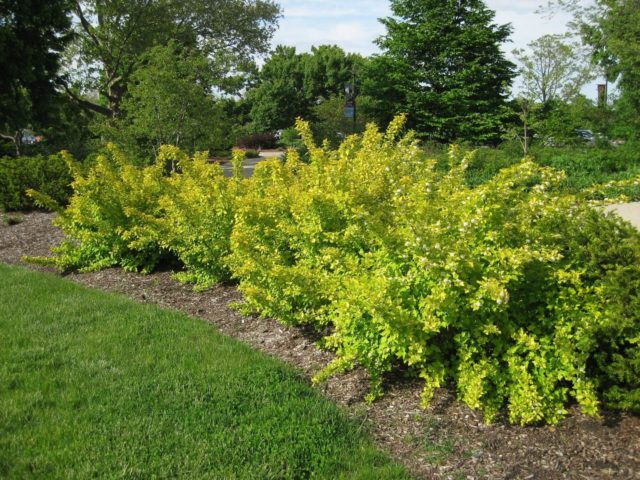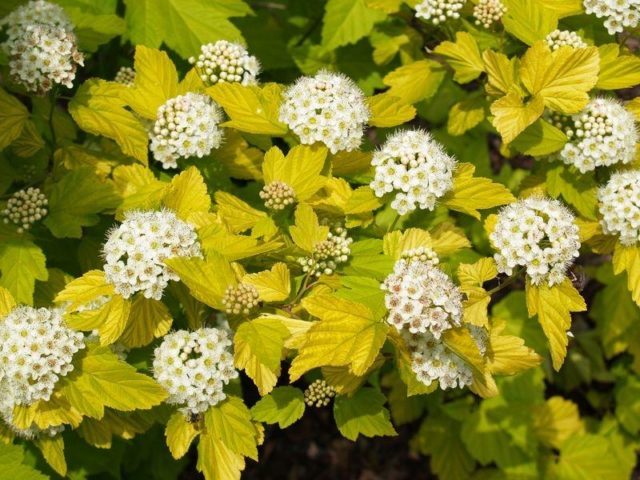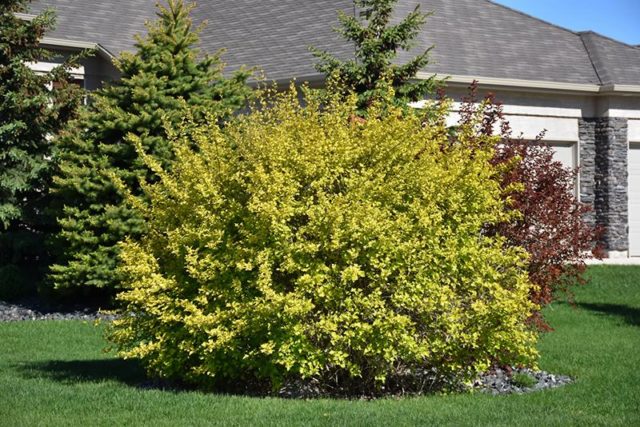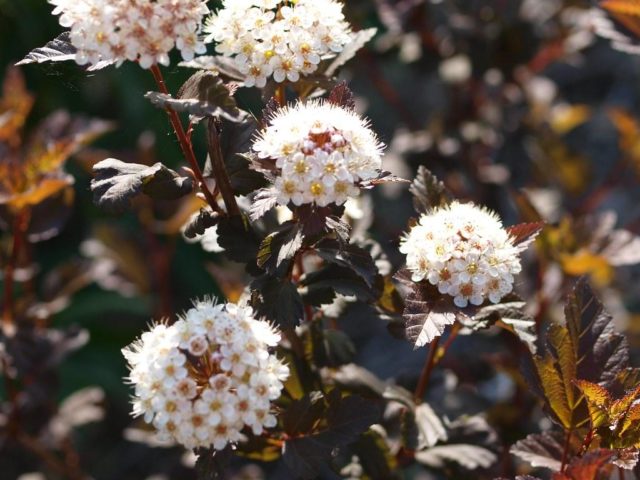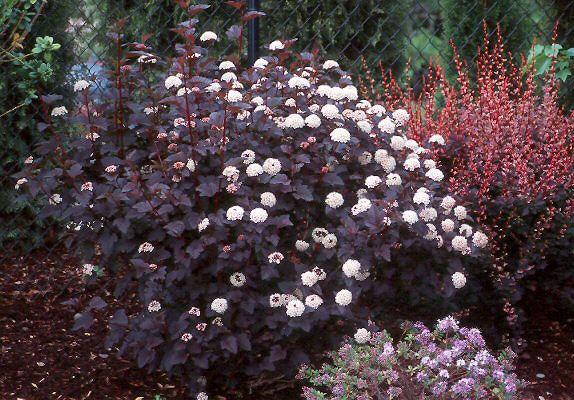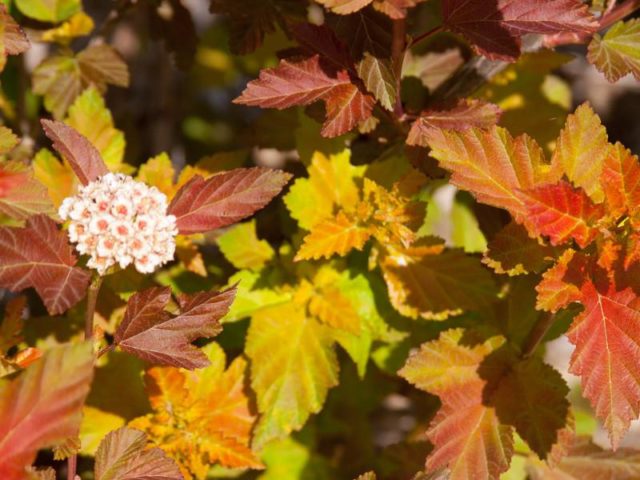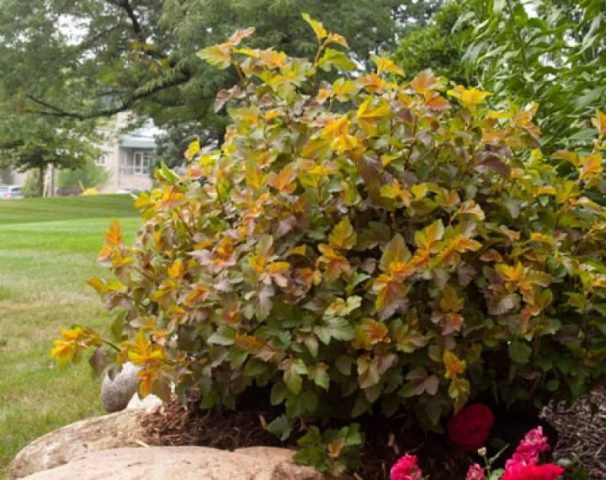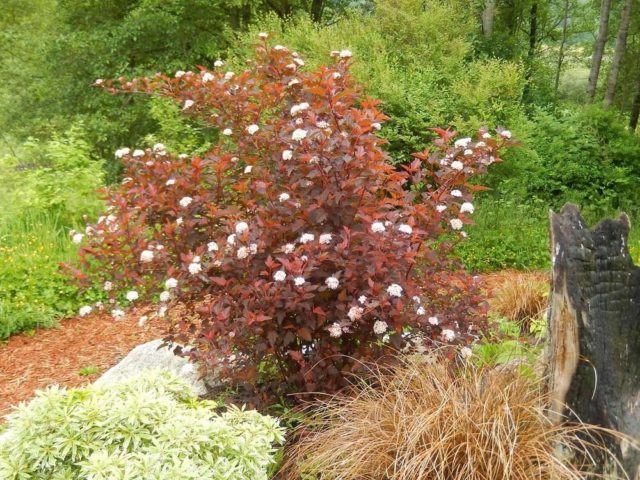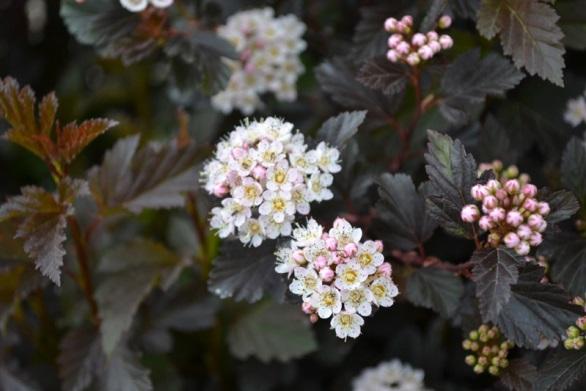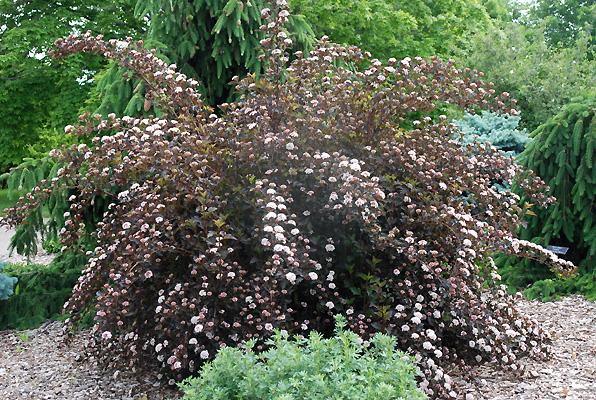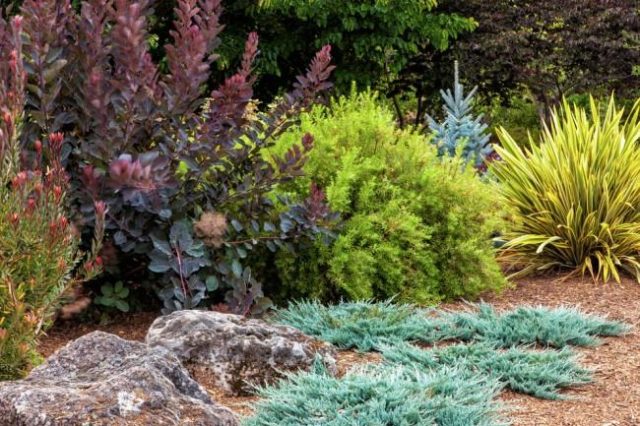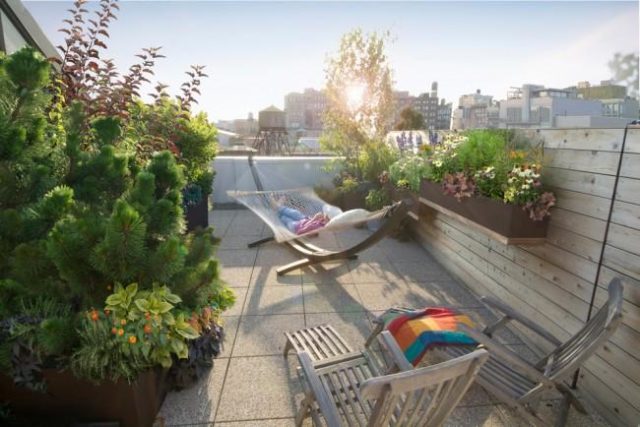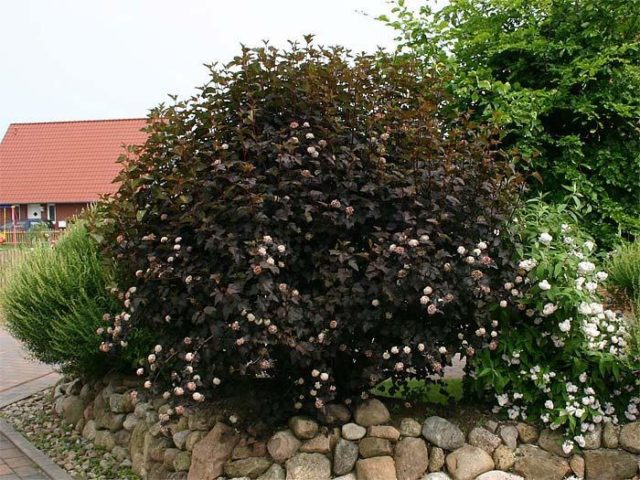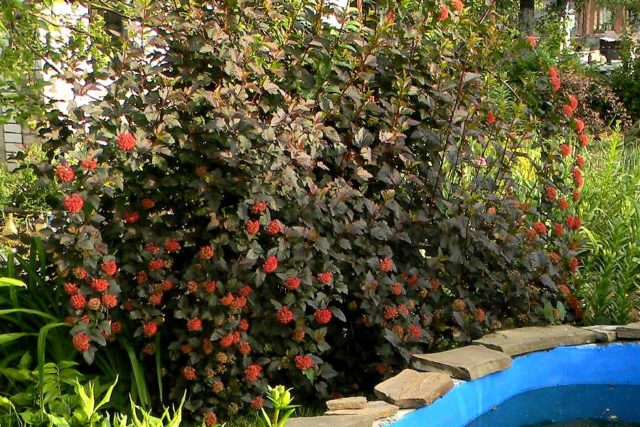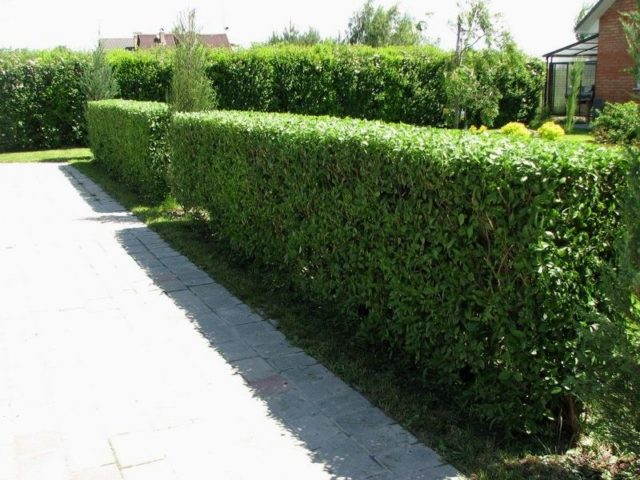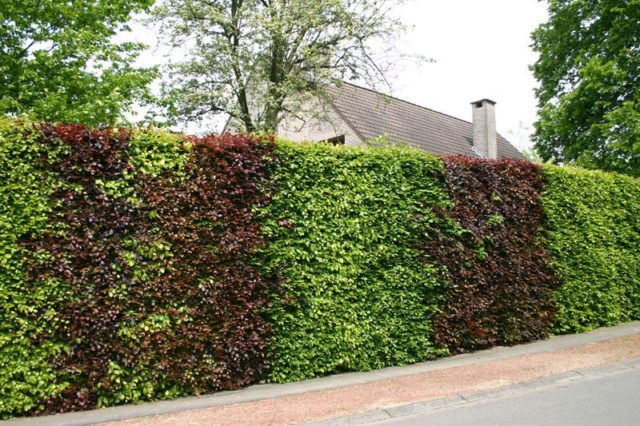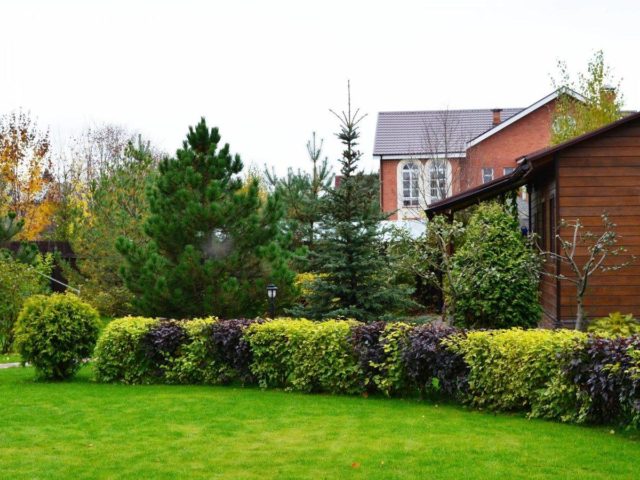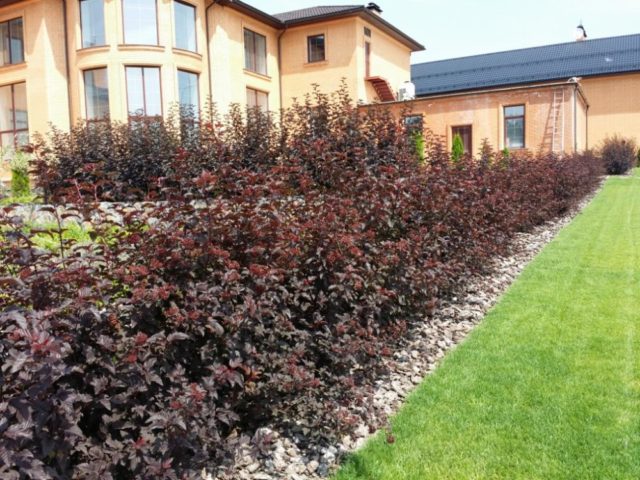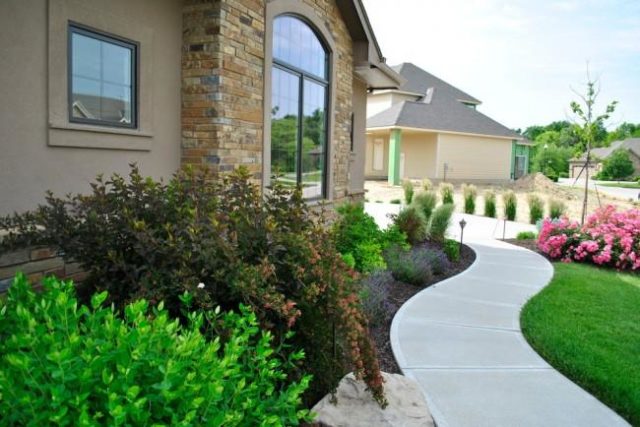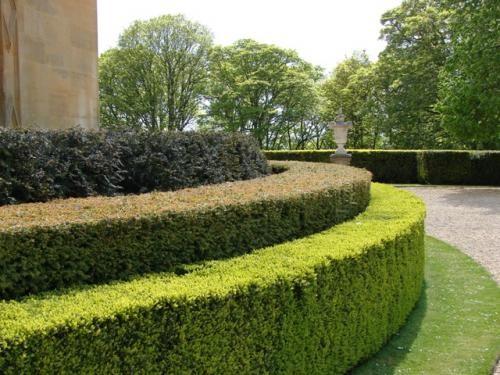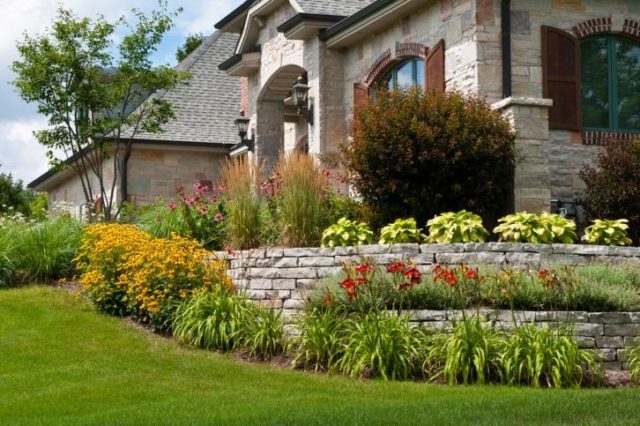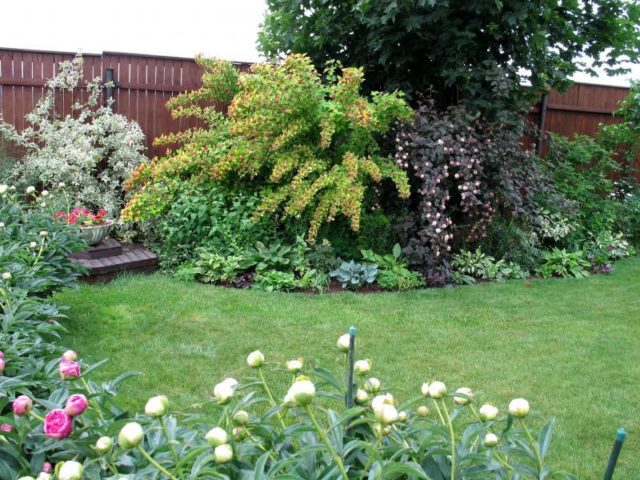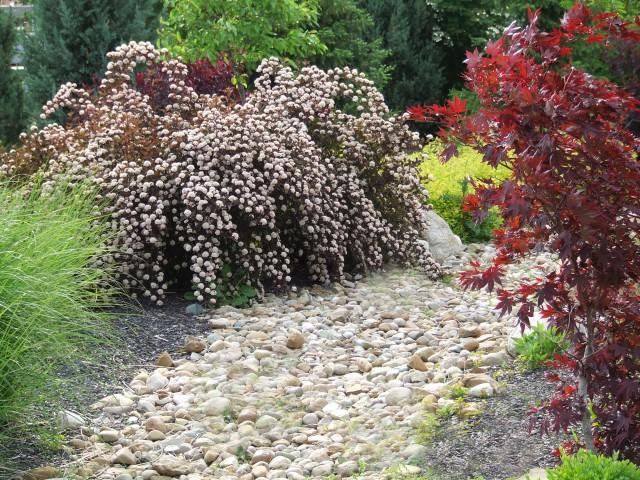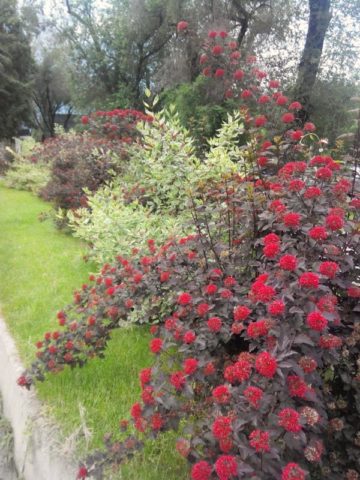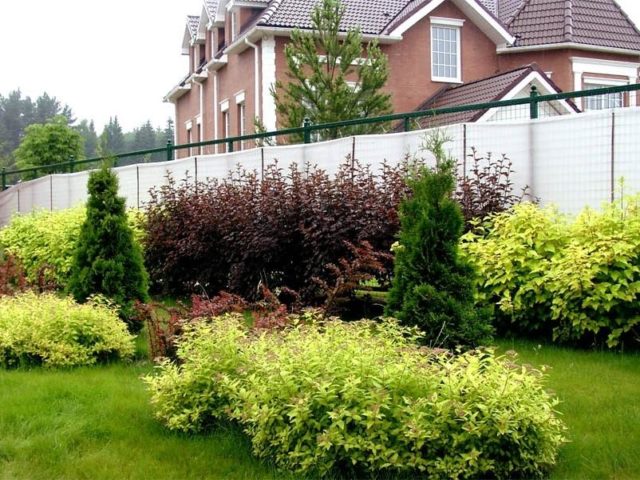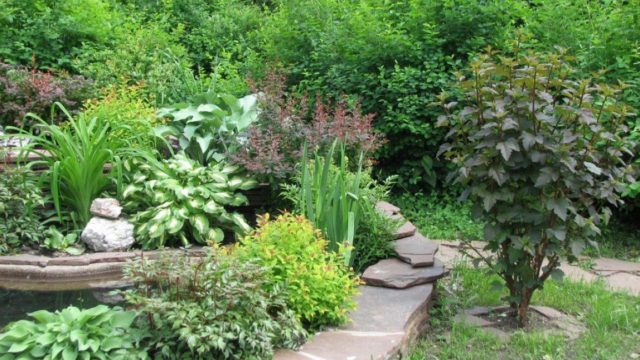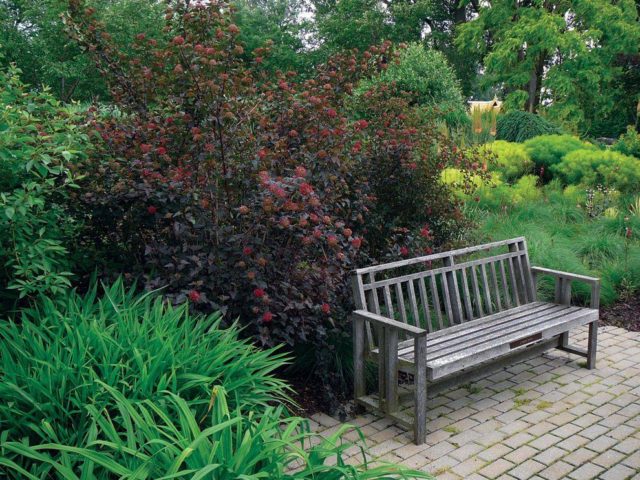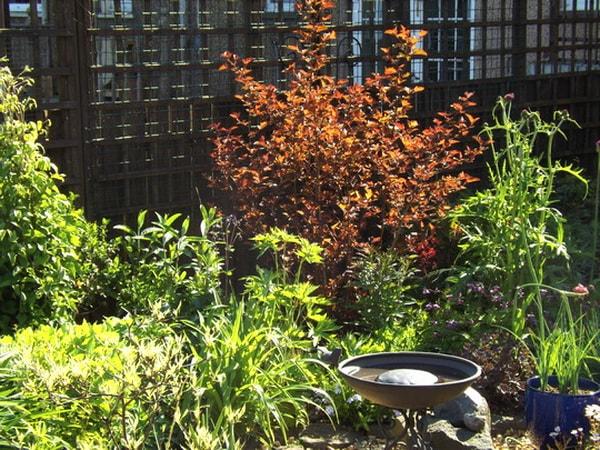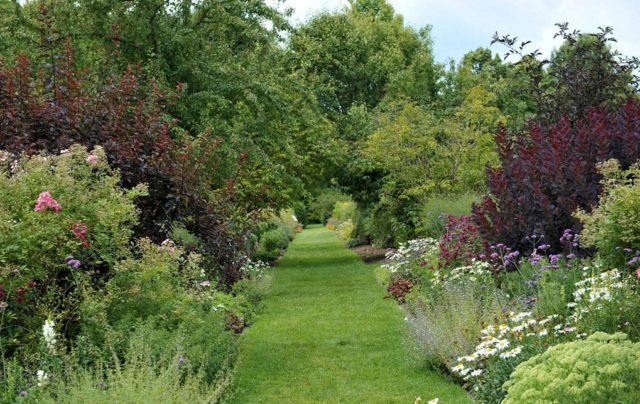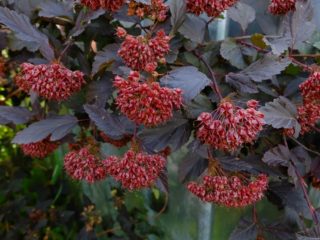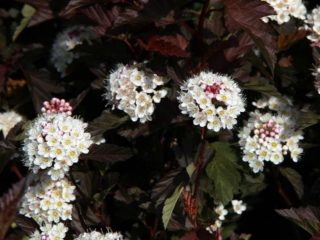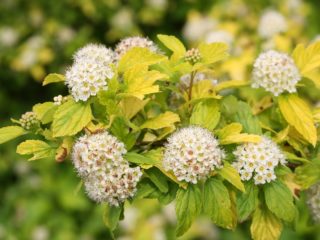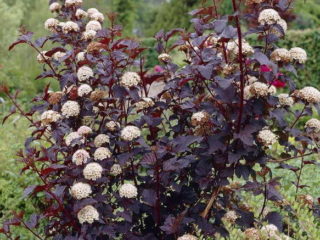Content
Among the wide range of garden crops, only a few plants combine unpretentiousness and excellent decorative qualities. However, the viburnum leaf carp can safely be considered one of these. Its ease of care and abundance of varieties have contributed to the fact that more and more gardeners are using bladderwrack in landscape design.
Features of bladderwort in landscape design
It is not without reason that the viburnum-leaved bladderwort, which is shown in the photo, is a popular element in landscape design. This deciduous shrub, first of all, stands out for its luxurious appearance. Depending on the variety, the physical characteristics of this perennial can vary widely, but the following features apply to all plant varieties:
- high decorativeness of the plant from the second half of spring to late autumn;
- blooming with neat white or pale pink inflorescences, lasting from June to late July;
- spectacular appearance of fruits that form clusters of burgundy or cherry color;
- the presence of glossy curly leaves that change color in autumn to gold, scarlet and orange tones;
- good growth rates;
- ease of care;
- quick recovery after pruning.
However, not only these plant features have won the hearts of gardeners around the world. The bladderwort, among other things, has a huge assortment of varieties, among which everyone will find something to suit their taste for landscape design.
What types and varieties of bladderwort are used in garden design
Chosen as a landscape decoration, the bladderwort will attract admiring glances throughout the season with its delicate flowers or bright foliage. And if you carefully choose a variety, you can create a garden that is unique in its design with minimal effort. Below are gardeners' favorite varieties of bladderwort with photos, used for landscape design.
Nugget
The Nugget variety, whose bushes can reach 2 m in height, attracts attention with its golden-green leaves. Against the background of the compact crown, white corymbose inflorescences with pink stamens look especially impressive. In warm conditions, the crop often pleases with repeated flowering, which occurs at the end of July - beginning of August.
Dart's Gold
Another yellow-leaved variety of bladderwort with a characteristic lime-colored crown. This shrub is smaller and has a height of 1.5 m. Unlike the previous variety, the flowers of this plant have a creamy tint.
Diabolo
Diabolo, also known as Purpureus and Monlo, has snow-white flowers and a luxurious dark purple crown.When grown in the shade, the purple color of the leaf blades acquires a greenish tint. The shrub itself can grow up to 2 - 3.5 m.
Amber jubilee
This variety of bladderwort has a very unusual leaf color. In spring and summer, the foliage is colored in orange-lime shades; in autumn it turns crimson, like a ripe plum. Unlike Diabolo, the Amber jubilee variety is not tall and reaches a height of 1.2 - 1.5 m.
Mindia
Also known as Coppertina, this variety is a cross between Darts Gold and Diabolo and grows up to 2.5m. It boasts exotic copper foliage that makes a very refreshing addition to green landscape arrangements. By mid-summer, the foliage palette is enriched with deep purple tones.
Summer Wine
The distinctive feature of Summer Wine, or Seward, is its flowing, lush branches covered with dark grape-colored leaves. Thanks to them, this 1.5-meter plant will become a real decoration of gardens and plots of various designs.
Types of compositions with bladderwort
The advantage of using bladderwort in garden landscape design is that it can be used in almost any composition.
So, they look very impressive in group plantings, thanks to their large patterned leaf plates. Bladderworts look very attractive in landscape design against the background of plants of contrasting colors. Coniferous trees highlight the beauty of these unusual shrubs especially well. Purple-leaved varieties will favorably set off thujas and spruce trees in yellowish tones, while yellow-leaved bladderworts combine more favorably with plants with blue or green needles.
At the same time, this magnificent plant is completely self-sufficient; it can delight with its appearance even when completely alone. This applies not only to flowering time, but also to the entire spring-summer period.
With the help of bladderwrack, you can not only complement group plantings, but also make amazingly beautiful hedges to delimit the garden area. The branched crown, rapid growth after pruning and luxurious coloring of the bladderwort contribute to the creation of both molded and free-growing high and low hedges.
Plain hedges in garden landscape design are good in themselves, but they can be given variety and texture if you use several varieties of bladderwort of different colors, as shown in the photo below. Thus, the varieties of the golden-green Nugget and the purple-leaved hybrid Diable d’Or are in perfect harmony with each other. Lemon Dart’s Gold and purple Diabolo look no less impressive when paired together. They are planted in two parallel lines or by alternating varieties with one another. In the latter case, the bushes are placed in a checkerboard pattern, leaving a space of 40 - 45 cm between the plants.
Neat small hedges made from medium-tall varieties such as Amber jubilee, Summer Wine and Dart’s Gold are ideal for creating natural fences that can separate the play area from the vegetable garden or terrace without disturbing the unified style of the landscape design.
When decorating garden paths and the area in front of the house, border plantings of bladderwrack bushes have proven themselves to be effective. They emphasize the well-groomed appearance of the site and add completeness to the landscape composition.
Bladderwort in landscape design is also used in two-stage planting. If the lower branches of tall shrubs are exposed, then a lower variety of plant is planted at a short distance from them. This technique not only hides the lack of green mass, but also looks very elegant.
The combination of bladderwort in the garden with other plants
The popularity of the viburnum vesicle in landscape design is also explained by the fact that its physical characteristics are in perfect harmony with other plants.
So, for landscaping areas with an urban design, an excellent pair for bladderwrack would be:
- Japanese spirea;
- barberry;
- low growing almonds;
- mock orange;
- honeysuckle;
- Kuril tea
In colorful color compositions, the ideal neighbor for this culture will be:
- miscanthus chinensis;
- rudbeckia shiny;
- Stachys Byzantine.
Often in landscape design, bladderwort is combined with different types of wood, for example, white or variegated. The unpretentiousness of these two plants, as well as their high decorative value, allows you to fully express your creative imagination without fear for the healthy growth of crops.
Caring for vesicles in garden landscape design
As already mentioned, viburnum leaf carp is not a capricious crop at all, and therefore even a novice gardener will not have problems caring for it in the landscape design of a dacha. When cultivating this plant, you should pay attention to some nuances:
- To plant the viburnum leaf carp, you should choose sunny areas, as it loves warmth.
- The plant is not too picky about the quality of the soil, but the best substrate for it is a mixture of turf, humus and sand in a 2:1:1 ratio.
- Bladderwort shrubs tolerate pruning well. It is carried out 2 - 6 times per season.
- The crop can be propagated by layering, cuttings or dividing the bush.
- In the middle zone, the plant is able to winter with virtually no shelter, since it has high frost resistance.
- On light soils, the bladderwort is watered at least 2 times a week. Heavy clay soil does not require such frequent procedures due to the danger of excessive moisture.
- The bushes are fed 2 times, in the spring they are fed with nitrogen-containing organic matter, and in the fall - with mineral fertilizers.
- For the winter, the tree trunk circle is mulched with peat compost or straw.
Here are some more photos of bladderwort in garden landscaping.
Conclusion
The bladderwort in landscape design opens up incredible scope for the creativity of gardeners.Thanks to the large number of varieties and the good compatibility of this plant with other crops, you can not be limited in realizing your fantasies of creating your dream plot.
